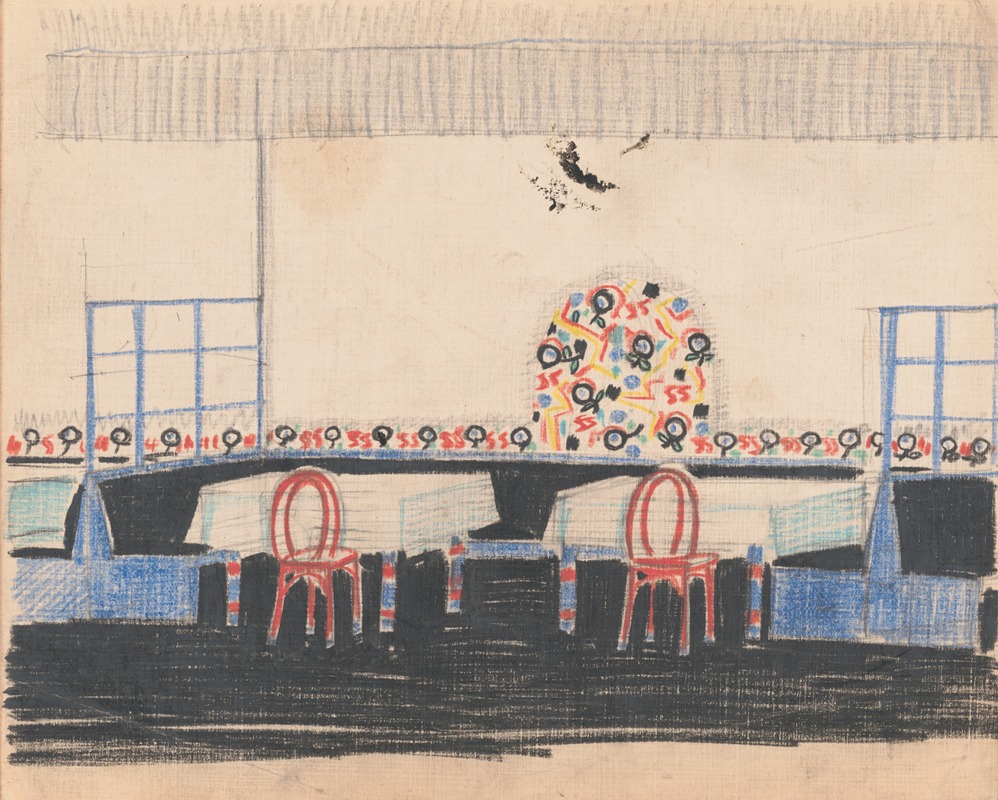
Interior perspective studies for a restaurant
A hand-painted replica of Winold Reiss’s masterpiece Interior perspective studies for a restaurant, meticulously crafted by professional artists to capture the true essence of the original. Each piece is created with museum-quality canvas and rare mineral pigments, carefully painted by experienced artists with delicate brushstrokes and rich, layered colors to perfectly recreate the texture of the original artwork. Unlike machine-printed reproductions, this hand-painted version brings the painting to life, infused with the artist’s emotions and skill in every stroke. Whether for personal collection or home decoration, it instantly elevates the artistic atmosphere of any space.
Winold Reiss was a German-American artist known for his portraits and interior design work, particularly in the early to mid-20th century. His contributions to art and design were significant, especially in the context of American modernism and the Harlem Renaissance. Among his various works, "Interior perspective studies for a restaurant" is a notable piece that reflects his unique approach to interior design and architectural visualization.
Reiss was born in Karlsruhe, Germany, in 1886 and immigrated to the United States in 1913. He brought with him a European sensibility and training, having studied at the Royal Academy of Fine Arts in Munich. His background in both fine arts and design allowed him to merge these disciplines in innovative ways, particularly in his work on interior spaces.
The "Interior perspective studies for a restaurant" showcases Reiss's ability to blend artistic creativity with practical design. This work is a series of studies or sketches that illustrate his vision for a restaurant's interior. These studies are characterized by their detailed attention to spatial dynamics, color schemes, and decorative elements. Reiss was known for his use of vibrant colors and geometric patterns, which were influenced by his interest in modernist movements and his exposure to diverse cultural aesthetics.
Reiss's approach to interior design was holistic; he considered not only the visual appeal but also the functionality and atmosphere of the space. His designs often incorporated elements that were meant to enhance the dining experience, creating an environment that was both aesthetically pleasing and conducive to social interaction. This attention to detail is evident in the "Interior perspective studies for a restaurant," where each element is carefully considered to contribute to the overall ambiance.
Throughout his career, Reiss worked on various projects that involved interior design, including notable commissions for hotels, restaurants, and public spaces. His work was particularly prominent in New York City, where he collaborated with architects and designers to create spaces that were both modern and reflective of the cultural zeitgeist. Reiss's designs often included murals and decorative panels, which became a signature aspect of his work.
In addition to his design work, Reiss was a prolific portrait artist, known for his depictions of Native Americans and African Americans. His portraits were celebrated for their sensitivity and depth, capturing the individuality and dignity of his subjects. This aspect of his work further underscores his ability to blend artistic expression with cultural representation, a theme that also permeates his interior design projects.
Reiss's contributions to art and design were recognized during his lifetime, and his legacy continues to be appreciated today. His work is held in various collections and has been the subject of exhibitions that highlight his impact on American art and design. The "Interior perspective studies for a restaurant" remains an example of his innovative approach to creating spaces that are both functional and artistically compelling.
Overall, Winold Reiss's work in interior design, as exemplified by the "Interior perspective studies for a restaurant," reflects his unique ability to integrate artistic vision with practical design, creating environments that are both beautiful and functional. His influence on American design and his contributions to the cultural landscape of the 20th century remain significant, making him a notable figure in the history of art and design.






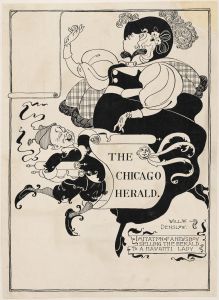
![Graphic design for cover of Survey Graphic Magazine; ‘Color, Unfinished Business of Democracy’.] [Design with map of Earth and human faces](/imgs/249247/s/winold-reiss-graphic-design-for-cover-of-survey-graphic-magazine-color-unfinished-business-of-democracy-design-with-map-of-earth-and-human-faces-c4efe311.jpg)
![Design drawings for Club Gallant project, New York, NY.] [Study for Club Gallant exterior](/imgs/249273/s/winold-reiss-design-drawings-for-club-gallant-project-new-york-ny-study-for-club-gallant-exterior-822ea339.jpg)
![Designs and photographs for alterations to St. James Bar Restaurant, W. 181 St. and New York, NY.] [Study of exterior elevation](/imgs/249306/s/winold-reiss-designs-and-photographs-for-alterations-to-st-james-bar-restaurant-w-181-st-and-new-york-ny-study-of-exterior-elevation-c23a0b8e.jpg)
![Interior design sketches for Alamac Hotel, 71st and Broadway, New York, NY.] [Incomplete interior perspective of a hallway](/imgs/249365/s/winold-reiss-interior-design-sketches-for-alamac-hotel-71st-and-broadway-new-york-ny-incomplete-interior-perspective-of-a-hallway-e54f10f2.jpg)
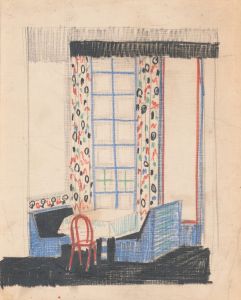
![Interior perspective studies for Restaurant Crillon, 15 East 48th Street, New York, NY.] [Study for Batik Room or Main Dining Room](/imgs/249377/s/winold-reiss-interior-perspective-studies-for-restaurant-crillon-15-east-48th-street-new-york-ny-study-for-batik-room-or-main-dining-room-f49c2d45.jpg)
![Design proposals for Puck Theater, New York, NY.] [Interior perspective study](/imgs/249412/s/winold-reiss-design-proposals-for-puck-theater-new-york-ny-interior-perspective-study-27d2bb72.jpg)
![Miscellaneous small sketches for inlaid table tops.] [Design with red geometric motif](/imgs/249442/s/winold-reiss-miscellaneous-small-sketches-for-inlaid-table-tops-design-with-red-geometric-motif-c586b6d.jpg)
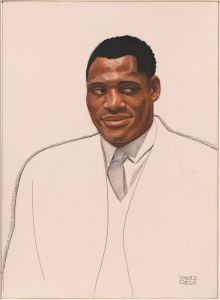
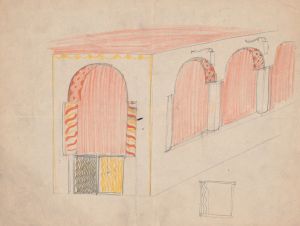
![Miscellaneous interior details.] [Details, figural doodles, and notations](/imgs/249484/s/winold-reiss-miscellaneous-interior-details-details-figural-doodles-and-notations-42b25d95.jpg)
